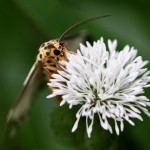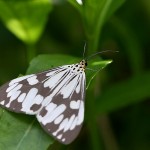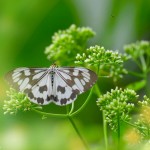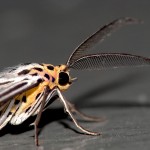Species: Nyctemera adversata
English Name: Tiger Moth, Ermine Moth
Chinese Name: 粉蝶灯蛾
Family: Arctiidae
Description:
The Tiger Moth has 4,2-5,2 cm in wingspan. The wings are white with dark brown patches. The fore wings have dark brown veins. The body is white with black spots, except for the head, neck and final abdomen which is yellow. This species is common in open forest areas.




Photos used under a Creative Commons license
References:
– Easton, E. R. (1993). The insects of Macau. Macau: University of Macau Publications Centre.

